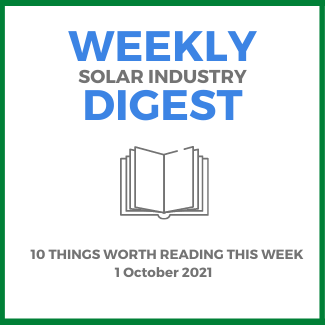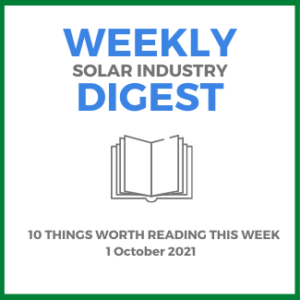Outdated cost-allocation planning has meant that developers bear almost all the cost of making upgrades to the grid, often blocking the development of low cost renewable projects. Better transmission planning to clear congestion on the part of utilities would remedy this – something FREC is currently looking at.
Apparently, most of the costs and benefits of Biden’s proposed $350 billion in clean energy incentives are distributed in a balanced manner. However, there are some issues: grid upgrades will partially fall on ratepayers, focusing on utility incentives may alienate non-utility generators and stifle competition, and only those with high tax bills can really benefit from solar tax breaks.
Faced with CRMs that don’t scale? Try integrating them with third-party APIs. Aurora walked though why and how to do this by defining an API, discussing the benefits of centralizing integrations, and using their own integration capabilities as a case study to understand how to troubleshoot issues (and to highlight the advantages of their platform, of course).
Straight-Talk Solar Cast from Solar Harmonics is a podcast that hits on some of the most up-to-date issues in solar – from the impact of labor shortages on the market and best practices for assessing a prospect’s electric bill so as to generate a proposal to the new CSLB requirements and the UN’s latest climate change report.
The DOC is on the cusp of deciding on antidumping and countervailing duties on solar panels from Southeast Asia. They’re looking at 50-250% tariffs on imported solar panels from Malaysia, Thailand and Vietnam. These additional panels on panel imports could have a devastating impact on the solar industry, according to some large-scale solar installers and developers.
SunPower has announced a new commitment to equity and justice in solar around marginalized communities. Its called SunPower 25X25 and comes with 2025 goals that touch on workforce diversity (women and minorities – particuarly around res install teams), solar access expansion (low-income communities) and dealer diversity programs (25% women/minority owned businesses).
Smart tech company NRG Systems now has LOGR-S Data Logger, a solar-specific data logging system. Its meant for solar resource monitoring on operational utility-scale PV plants and is able to be customized for a project’s particular requirements. Its compatible with their Solar Resource Monitoring System and industry-standard sensors and has a built-in PV input module.
There are some predictions that the budget reconciliation bill may be cut in half – though it could mean a loss of some substantial investment in climate change containment and clean energy proliferation. Two moderate Democratic senators are the the main reasons. Both are reluctant to go with the $3.5 trillion price tag, though Sen Manchin does approve of a $1.5 amount.
The US has to install 85 GW of renewable energy annually until 2035 to reach the emissions reductions set in the Clean Electricity Performance Program legislation being considered in Congress. SIEA’s industry wide goals are aligned with these numbers, though both are more ambitious than previous goals and are deemed achievable by SEIA.
The Fluence IPO could send some ripple effects through the energy storage and renewables markets. The company’s rapid growth mirrors the growth in the overall energy storage industry over the past 5 years – Fluence’s energy storage tech stack is in its 6th generation, the company acquired Advanced Microgrid Systems, and they’ve recently beefed up their digital software platform capabilities.


